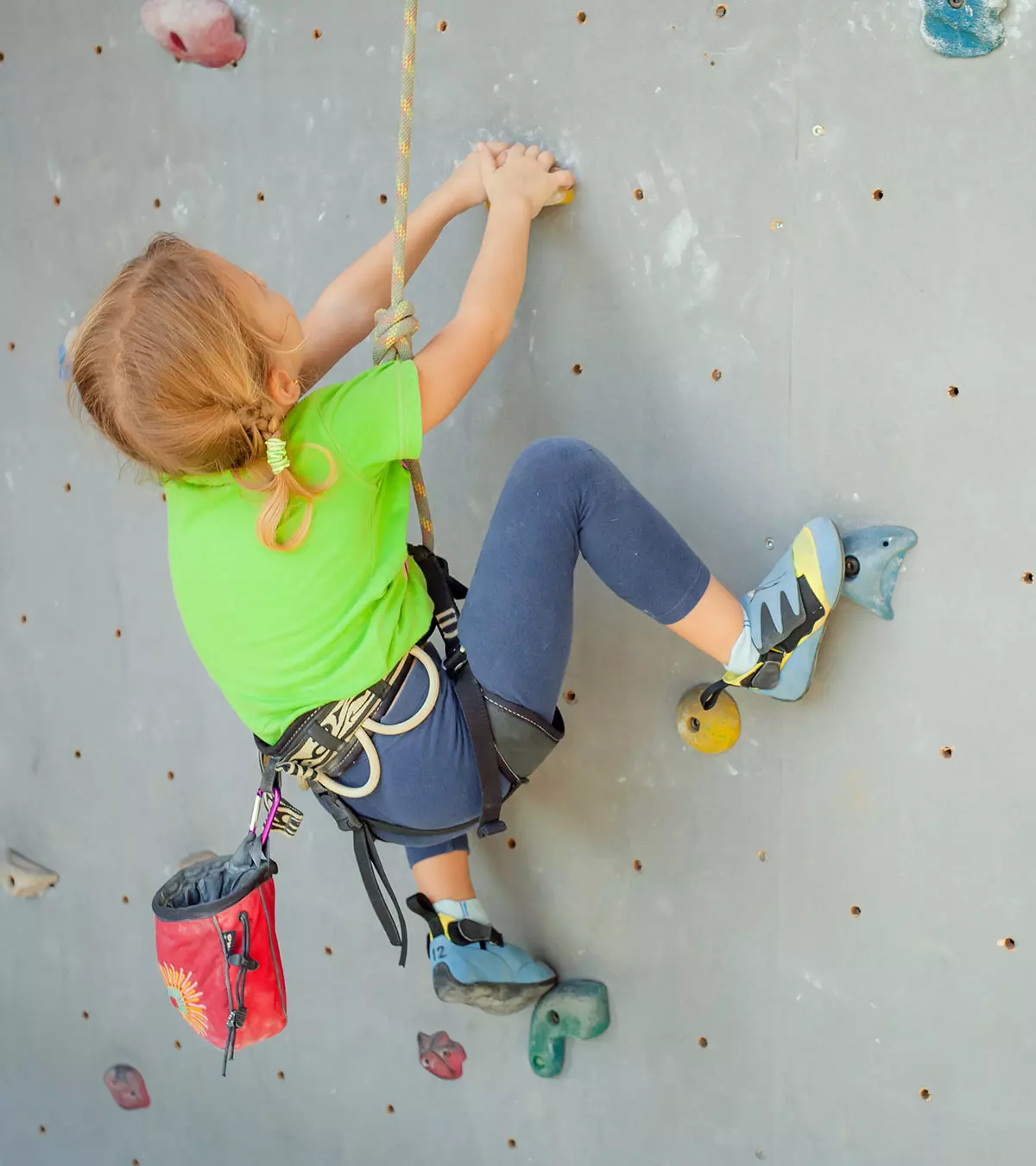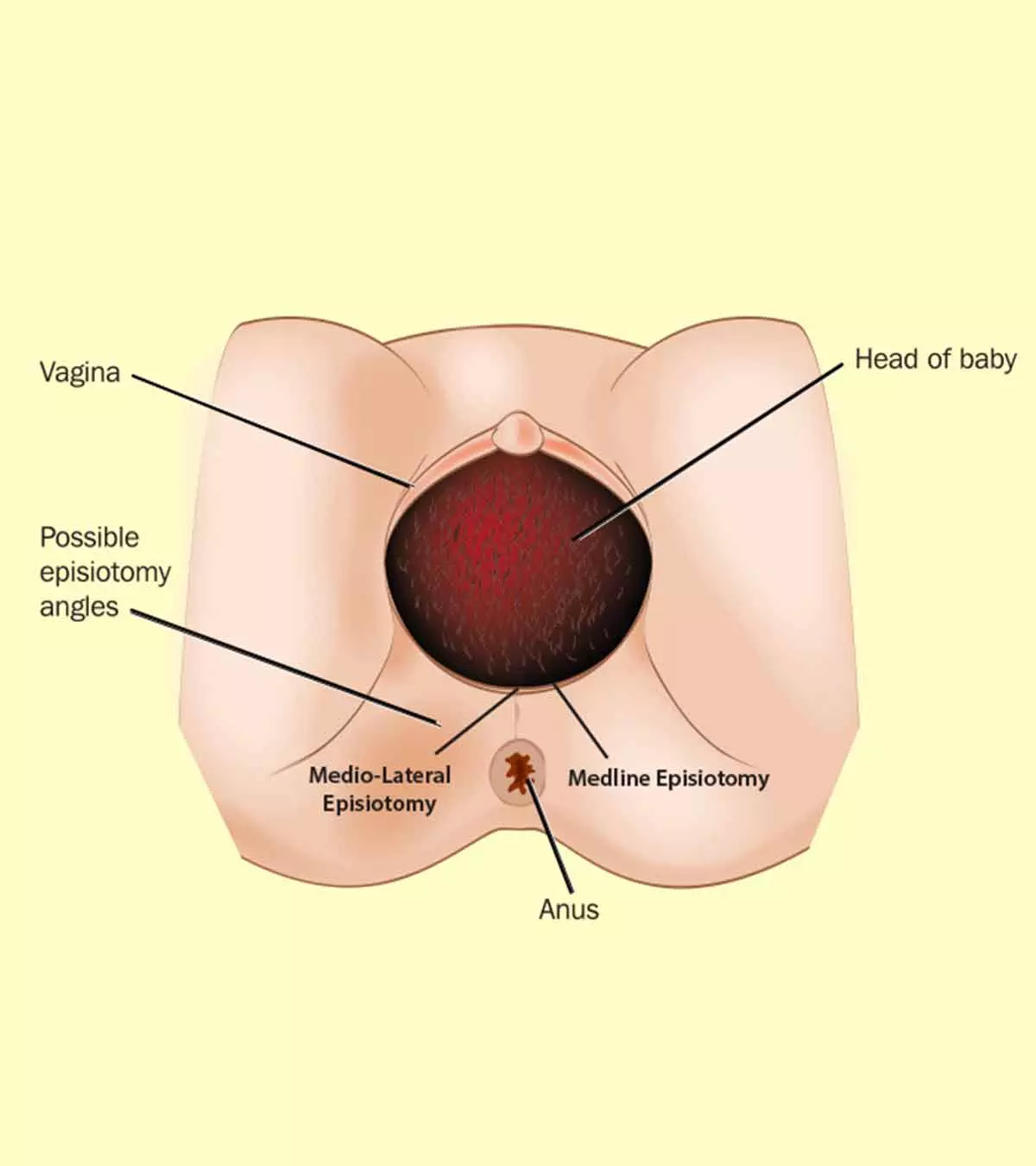

Image: Shutterstock

There are several methods of sleep training your baby. The “cry it out” method is one such technique that is effective at making infants accustomed to falling asleep on their own without the physical presence of their parents or caregivers.
Infants have irregular sleep patterns in the first few months after birth. As they start differentiating between day and night, they gain more control over their bodies, and by three to four months, their sleep pattern becomes more regular. Thus, you may opt for your baby’s sleeping arrangement at your family’s convenience.
Some babies become habituated to sleeping through the night, while others may need guidance from parents or caregivers. If you wish to teach your little ones to sleep independently in their cribs, you may start letting them fall asleep on their own at around six months. Although this may involve some crying in the initial phases, it will gradually help your child sleep better.
Six to nine months is the ideal period to follow this method, but once your infant can stand in the crib and call you, the “cry-it-out” should be ideally avoided. Keep reading this post as we guide you through the different methods of sleep training your baby, including the “cry it out” method.
What Is the “Cry It Out” Method?
Once babies get to around four months of age, they develop an adult pattern of sleep. The beginning of the night typically is a period of deep sleep. Then for the majority of the night both babies and adults cycle through to a lighter stage of sleep called REM or rapid eye movement sleep. These cycles are typically 60-90 minutes in length. At the point of lightest sleep, they may even get to a partially awake state.
When they are able to get themselves back to deep sleep on their own , then what you see as a parent is a baby who sleeps through the night. But if they do not know how to get themselves back to sleep, they may awaken fully and start to cry. They look for whatever was present when they first fell asleep. If that is your body or your breast, then they will need whatever that was to go back to sleep. The conditions accompanying a baby when they fall asleep is called a “sleep association.” If you want to teach your baby to sleep through the night, they will need to learn a “sleep association” that does not require your physical presence. Letting them cry themselves back to sleep is one method for teaching a new sleep association (1).
Cry it out is a sleep training method where parents let a woken up baby cry alone for a predetermined time. The objective is to teach the infant or toddler to self-soothe and fall asleep. ‘Cry it out’ is a colloquial phrase for several methods that advocate letting a baby cry himself to sleep. The scientific name of this sleep training procedure is ‘graduated extinction’ (2).
While this method can be emotionally challenging for parents, babies usually tolerate it well. When parents are struggling with severe sleep deprivation from months of regular night waking, they may become irritable or even depressed. The needs of parents to be rested and emotionally available for the baby should be considered in these decisions.
How Do Cry It Out Methods Work?
The idea behind cry it out methods is to slowly increase the time taken by a parent to soothe a crying baby. This leads to the little one finding ways to self-soothe, eventually. There are different types of cry it out methods, but Ferber’s is the most popular one.
What Is Ferber Method?
This sleep training technique was proposed by Dr. Richard Ferber in his book Solve Your Child’s Sleep Problems. Just like in cry it out method, Feber method also involves an incremental delay in the time taken by parents to pacify a crying infant, eventually making him adept at falling asleep with zero parental assistance. The use of Ferber method is informally called ‘ferberizing’, and a baby trained this way is described as ‘ferberized’ (3).
Ferber Method Process
The decision both if and when to teach an infant to sleep independently should be made carefully with both parents involved and in agreement. The infant should be in good health and both tired and not hungry when first put to bed. The Ferber method should be applied only to infants over six months, and not beyond 12 months.
Once you decide to follow the “Ferber” method, the most important part is that your baby falls asleep without being held, rocked, or fed. In that way they learn a sleep association that does not involve your physical presence. So when you go in the room you can try to comfort them with words, but should not pick them up. The visit is more for your own comfort and to see that the baby is OK.
- Step 1: Put the baby in the crib when he is drowsy, but not asleep yet.
- Step 2: Have some kind of comforting ritual such as reading a book, then say goodnight and leave the room.
- Step 3: If the baby cries out, then wait, and enter the room to calm the baby, but do not pick him up. Also, do not switch on the lights. Limit your stay to a minute.
- Step 4: When the infant cries again, do not go immediately, but wait for some time. Thus widen the intervals between the time the baby cries and the moment you enter the room.
- Step 5: Follow the same routine for the rest of the night.
The waiting time plays a crucial role in Ferber method since it needs to be consistent. Therefore, maintaining a schedule helps make things easier. Typically babies catch on pretty quickly and learn by the time you get to about 10-15 minutes that you are not coming and they find a way to self sooth.
However, for a small subset of babies, such as those who are very sensitive to sensory input, have a persistent temperament, or who have difficulty self-regulating for other reasons, they will cry for long periods of time. If this happens you should discuss this with your child’s pediatrician and choose a different method.
Ferber Method Chart
The following schedule gives you the time you must wait between the first, second, and subsequent visits to the baby’s crib. In other words, it is how long the baby can cry before you soothe him. This chart can serve as a guide for parents to give them structure.
| Day | First interval | Second interval | Third and subsequent intervals |
|---|---|---|---|
| One | 3min | 5min | 10min |
| Two | 5min | 10min | 12min |
| Three | 10min | 12min | 15min |
| Four | 12min | 15min | 17min |
| Five | 15min | 17min | 20min |
| Six | 17min | 20min | 25min |
| Seven | 20min | 25min | 30min |
There is no magic to this chart. Rather, it simply serves as a guide. you may gradually increase the waiting time between visits.
Can A Baby Sleep With Toys And Pacifiers?
A soft object that poses no choking or suffocation hazard such as a small piece of blanket or a small light stuffed animal can serve as what pediatrician D.W. Winnicott called a “transitional object.” A colloquial term for this object is a “lovely.” This object can help a child make the transition to independent sleep and may also serve a comforting function in other settings.
A pacifier is not considered a “transitional object” but may help with falling back to sleep. For a young infant they may not be able to retrieve the pacifier on their own so the night-waking still requires a parent’s physical presence. Whether or not you want your child to use a pacifier is another personal decision separate from how you teach your child to sleep through the night.
Does Ferber Method Work With Naps?
It is best to teach your child a new sleep association for nighttime sleep first. Once they have mastered falling asleep on their own the skill can be used to fall asleep for naps. But the Ferber method is better suited for night time sleep than daytime naps.
Alternatives To Ferber Method
Ferber method is the most popular of all the cry it out methods. But, you could try other methods as well.
- Modified Ferber method: gives structure to a process that can be difficult for parents. If you start and then after the baby cries for a certain amount of time you go in and pick them up and rock them. then unfortunately you are only teaching them the opposite of sleeping independently. They learn that persistent crying will eventually get you to come and pick them up. So as long as your baby is healthy and the crying is gradually diminishing in length and intensity, it is best to stick with the process. But if the family finds the process very difficult, then some variations can work. These can be tailored to the individual child and family.
- No tears method: The parent puts the baby in the crib, pulls a chair, and sits next to the baby till the little one falls asleep. The next night, the parent sits with the chair farther away than the previous night, but within the baby’s line of sight. The parent increases the distance gradually every night and eventually leaves just the chair in the room. It gives a pseudo-assurance to the baby that the parent is near him. Some experts consider this method a better alternative to the conventional cry it out methods, as it does not make a baby cry till exhaustion, and is rightly called no tears method. It is also referred to as “camping out”.
- ‘Sleep lady’ shuffle: It is a modified no tears method. The parent distances the chair ultimately placing it outside the door yet sitting on it till the baby falls asleep. The distance is increased till a point where the baby cannot discern the parent’s presence. From the next night, the parent leaves the door open, and probably the chair as well, but does not sit on it. The baby assumes that the parent is seated somewhere beyond the door and feels comfortable.
- Bedtime fading method: The more tired the baby, the better he sleeps – this is the idea behind bedtime fading method. Parents wait for the baby to be extremely exhausted and thus fall asleep. Then they put the baby in the crib. The time is noted and, the parent puts the infant to bed exactly at the same time every night. Maintaining a schedule makes the baby sleepy at a fixed time and makes it easier to for him to get sound sleep.
- Weissbluth method: The Weissbluth method was proposed by a pediatrician, Marc Weissbluth, and the fundamental concept is similar to ferberization. In Weissbluth method, you put the baby to bed the moment he shows the first signs of drowsiness. Once placed in the crib, you leave the infant and do not attend to him no matter how distressfully the baby cries. The little one is completely on his own to self-soothe and fall asleep. Weissbluth method is perhaps the harshest of all cry it out methods and heart wrenching for most parents. However, experts believe consistent utilization of this procedure can yield favorable results.
Cry it out methods may sound harsh but do have their share of advantages. Chronic sleep deprivation can have negative consequences for parents which in turn have negative impacts on the baby. Many things must be taken into consideration in making these decisions. The degree of family support, other stresses on parents, and the baby’s unique temperament all have a role to play in family decisions about teaching a baby to sleep independently.
While there are pros and cons of the cry it out method, most researchers agree there is no definite way to support or contradict this technique. Studies that support cry it out rely heavily on personal experiences, which could be subjective.
Precautions While Trying Cry It Out Method
Here is what you must consider before adopting the cry it out method:
1. Baby must be older than six months: The infant should be at least five to six months old before you give a shot to any sleep training technique. Beyond 12-15 months of age sleep training becomes too emotionally stressful for both parent and infant. Do not train if the baby is ill: A baby who is under stress would wake up in the night crying. Sleep training is only going to add to their anxiety.
2. Babies who by temperament are extremely difficult to sooth and have sensory sensitivities may have a lot of difficulty. In these situations it’s best to discuss sleep with a professional and come up with a plan that is uniquely suited to your child and your family.
3. If your baby is teething it may be difficult to tell why the baby is crying. As teething goes on for many months, it is possible to sleep train while a baby’s teeth are coming in. It is best to discuss the issue with your pediatrician to help sort out the different reasons for crying.
4. Be flexible. If the process proves to be too difficult for your baby and their crying does not diminish, or you find the process too painful emotionally, or both, then stop. Reconsider the whole issue of sleep in discussion with your pediatrician or another health professional.
Tips For Cry It Out Training
Here is how you can make the baby adapt to cry it out method successfully (4):
- Discuss the plan with your partner: Weigh the pros and cons. Consider the ways you both can synchronize to make it work. If you have other family members, then ask them to be prepared for unattended baby cries in the middle of the night.
- Maintain a bedtime routine: Stick to a routine every night such as bathing the baby or reading them a book. That way, the baby knows that it is time to sleep.
- Expect some disappointments: There are going to be several sleepless nights, followed by peace. Be prepared to shuffle between moments of angst and calm for several days
Frequently Asked Questions
1. Is the cry it out method safe?
Studies have shown that this method could be safe for babies, with no reported adverse effects (5). However, larger studies are needed to prove its effectiveness in general.
2. Why are some people against the cry it out method?
Some experts suggest that parents should try alternative methods because this method may not work for all and could, in turn, affect the parent-child relationship and increase the crying in some infants (6).
The “cry it out” method is a successful sleep training strategy for teaching newborns to fall asleep by themselves without their parents or caregivers around. It allows newborns to cry themselves back to sleep after being awakened, known as ‘graduated extinction.’ There are several types of cry it out methods, with Ferber’s approach being the most common as it entails a gradual increase in the time the parents take to calm a crying baby. However, before using any sleep training methods, ensure your baby is at least six months old and not suffering from a fever or teething.
References
- sleep training.
https://www.sleepfoundation.org/baby-sleep/sleep-training - Letting babies cry themselves to sleep not damaging, study finds.
https://www.cbc.ca/news/health/infant-sleep-training-1.3596816 - How to Sleep Train Babies.
https://sleepdoctor.com/baby-sleep/sleep-training/ - Letting Babies Cry – The Facts Behind the Studies.
https://www.laleche.org.uk/letting-babies-cry-facts-behind-studies/ - Ayten Bilgin and Dieter Wolke; (2025); Parental use of ‘cry it out’ in infants: no adverse effects on attachment and behavioural development at 18 months.
https://www.researchgate.net/publication/339844317_Parental_use_of_%27cry_it_out%27_in_infants_no_adverse_effects_on_attachment_and_behavioural_development_at_18_months - From Safe Sleep to Healthy Sleep: A Systemic Perspective on Sleep In the First Year.
https://depts.washington.edu/nwbfch/infant-safe-sleep-development
Community Experiences
Join the conversation and become a part of our nurturing community! Share your stories, experiences, and insights to connect with fellow parents.













